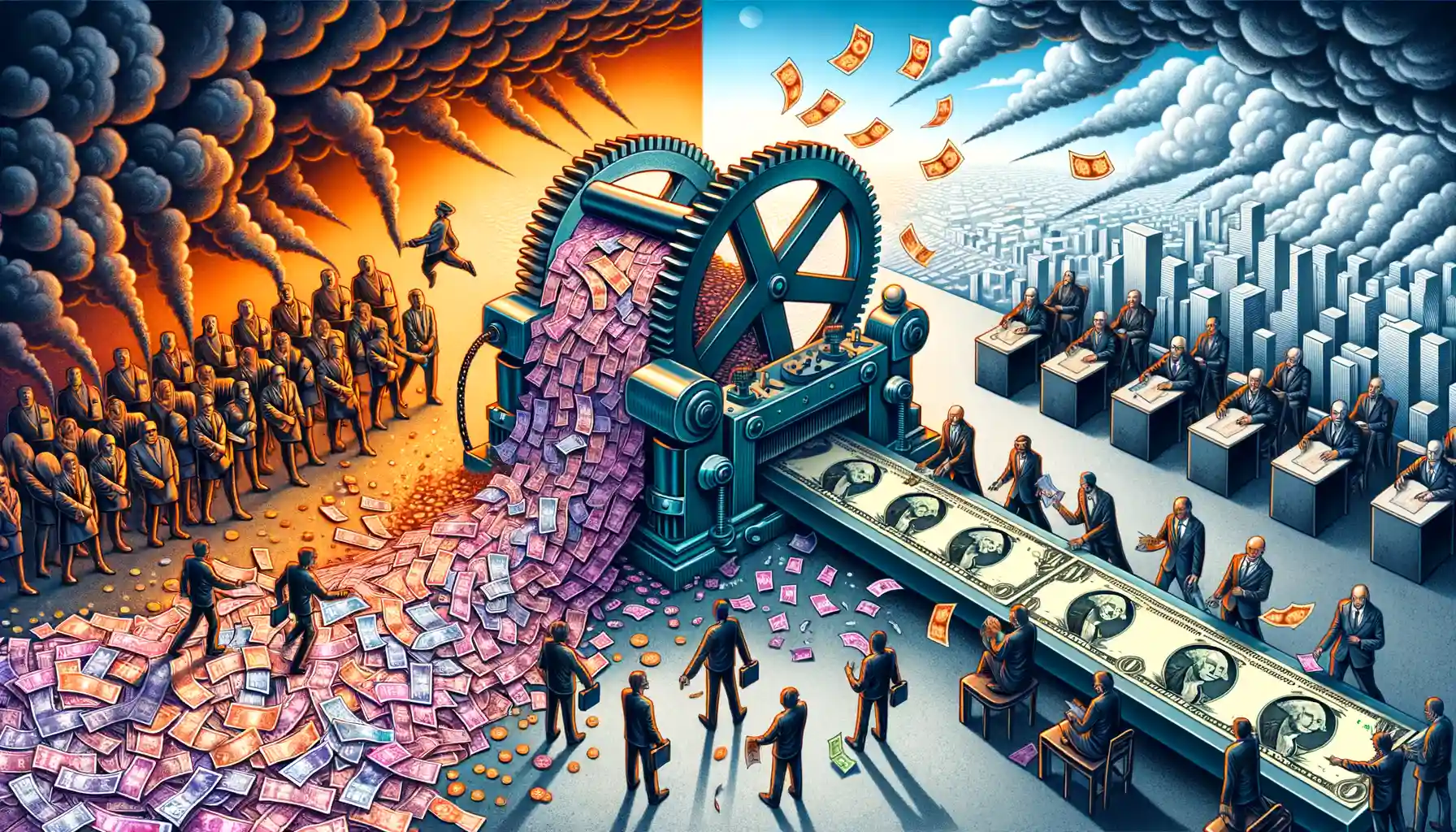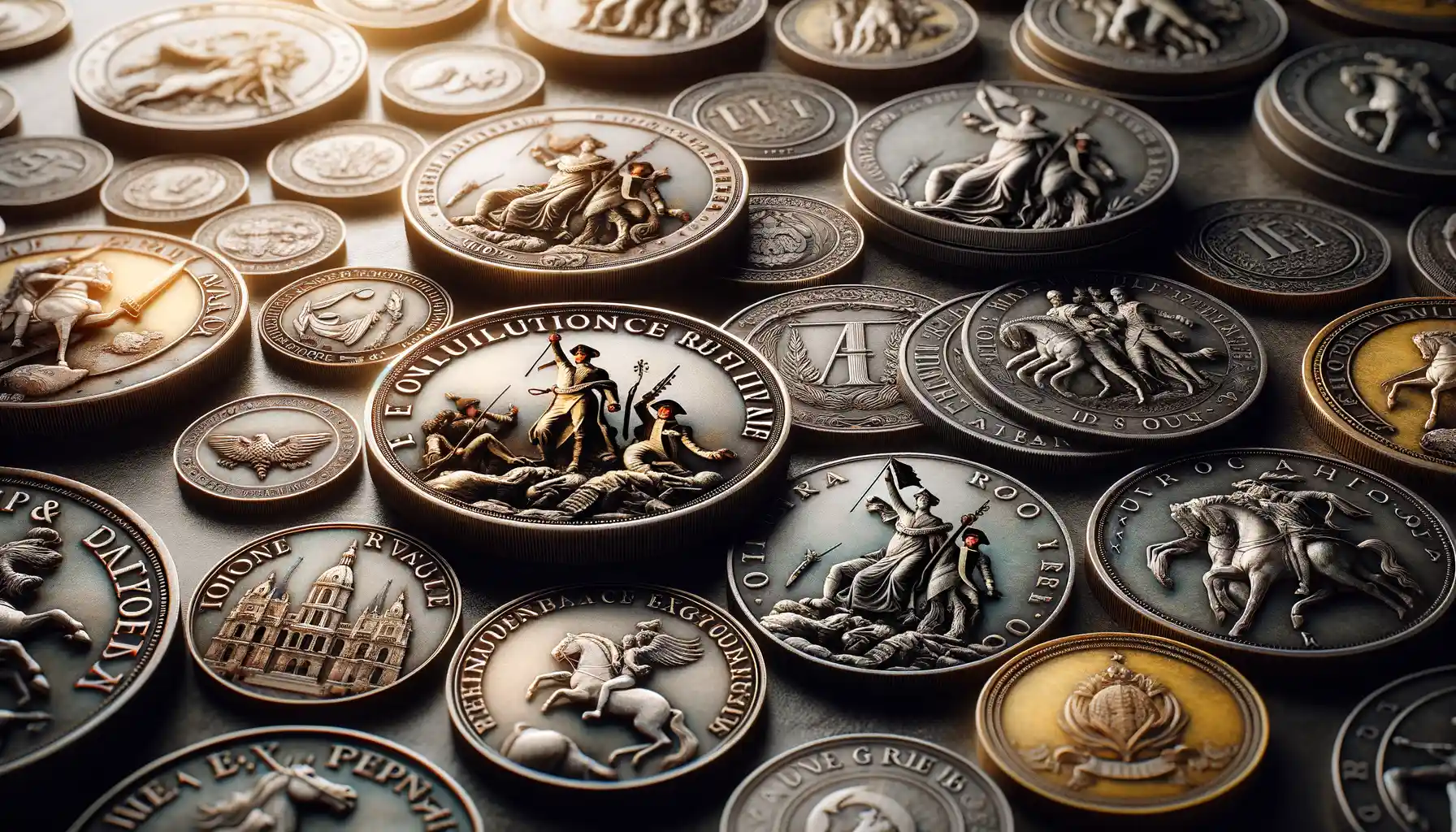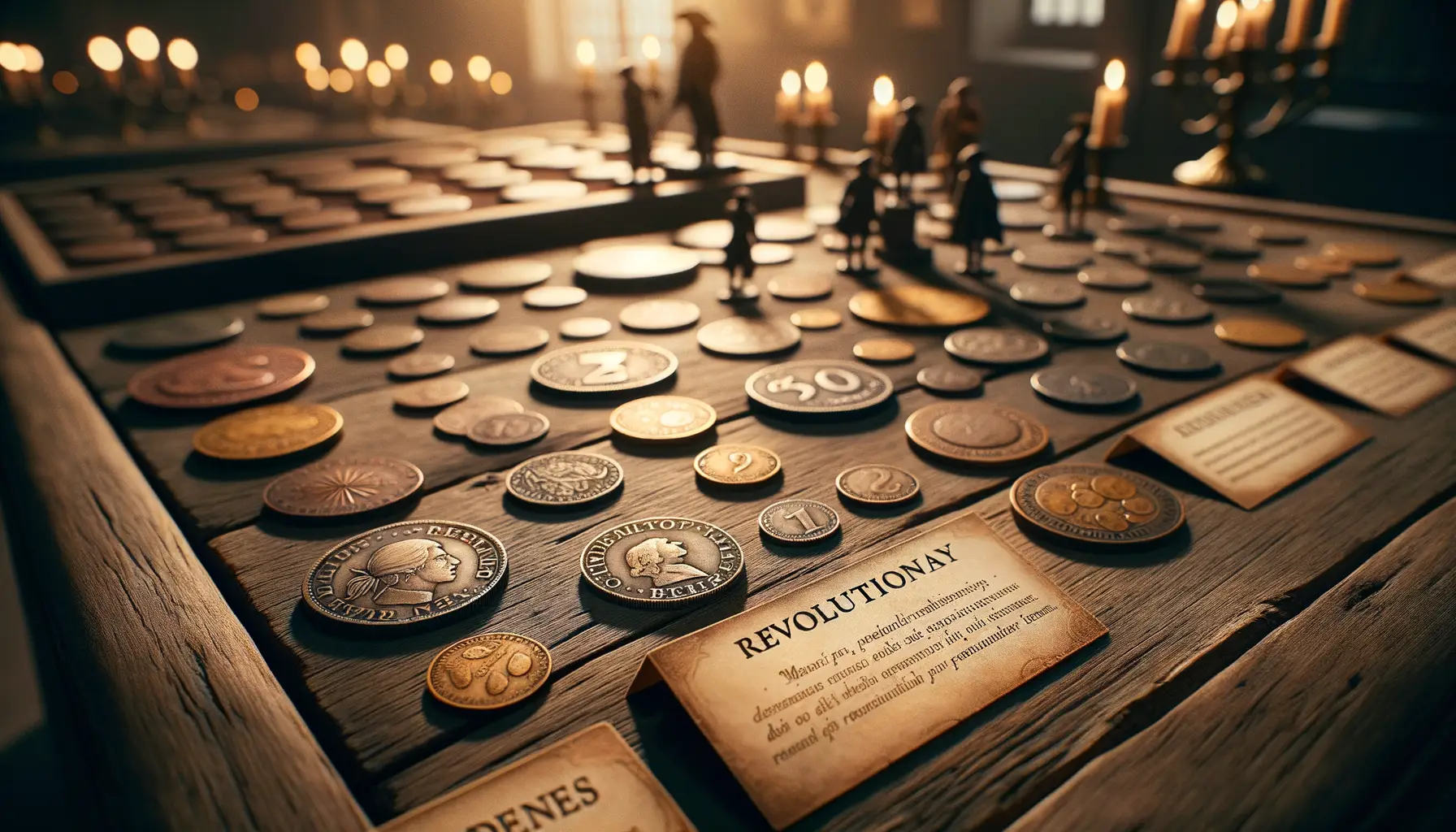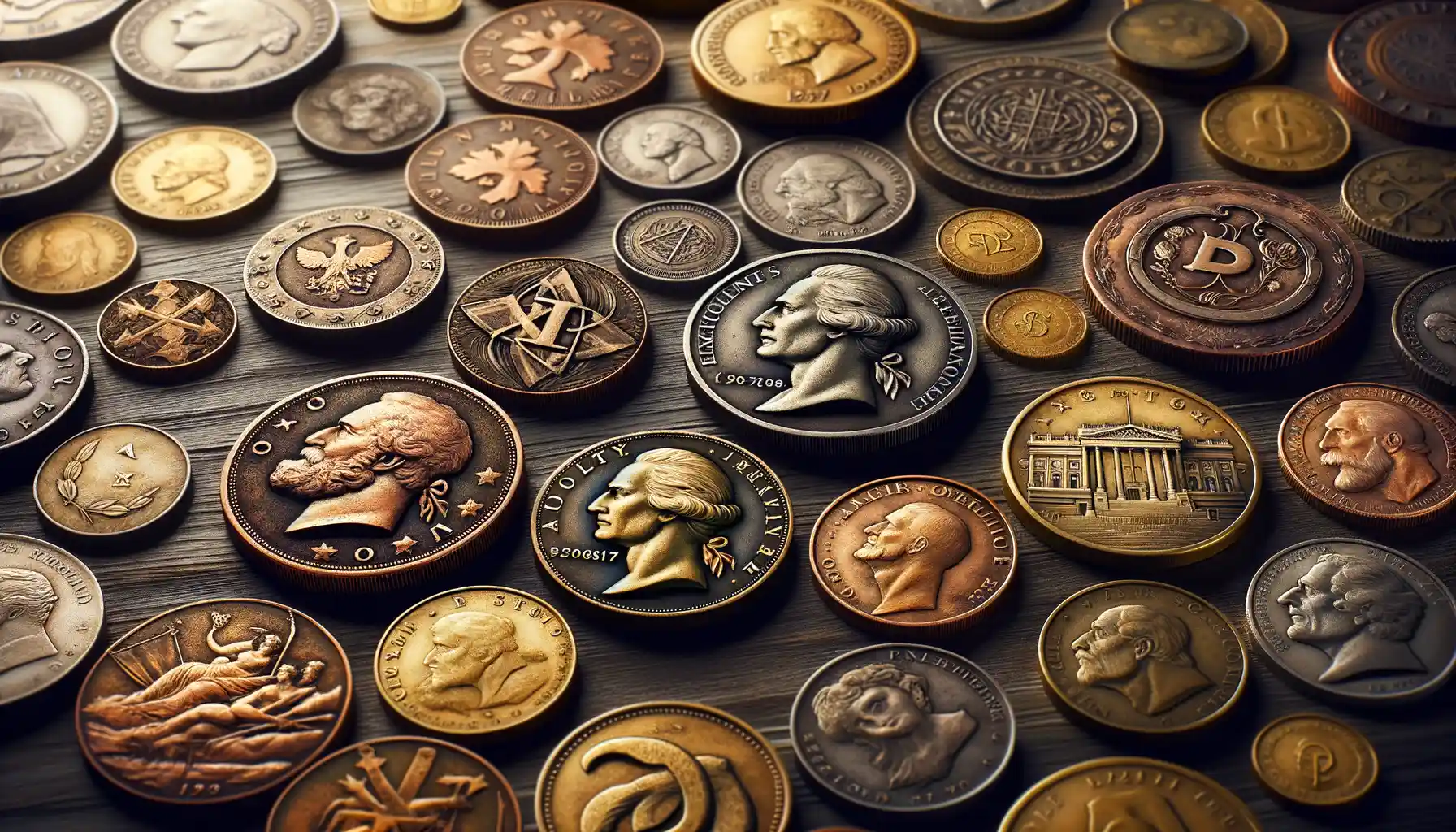Historical Context of Coinage in Revolutionary Eras
The Spark of Change: Coins in the Heat of Revolution
Picture this: a tiny coin, passed hand-to-hand amidst the fervor of rebellion, carrying not just monetary value but the weight of an entire movement. During revolutionary eras, coins weren’t mere pocket change—they were symbols of hope, defiance, and unyielding determination.
Take the late 18th century as an example, a time when upheaval rippled across continents. As colonies fought empires or citizens rose against monarchs, coins began to tell their own stories. Look closely at a revolutionary-era coin, and you’ll see history etched into its surface: altered inscriptions, newly minted national seals, or even rough overstrikes on old imperial currency. Think of these changes as bold declarations—“We are here, we are free, and we’re not looking back.”
- In Revolutionary France, coins bore the phrase “Liberté, Égalité, Fraternité”, embodying ideals that stirred millions.
- During the American Revolution, colonial leaders issued silver and copper tokens marked with “Continental Currency”, rallying unity in uncertain times.
These physical artifacts became tools of legitimacy, screaming rebellion louder than pamphlets ever could. Coins didn’t just jingle in pockets; they rattled the foundations of old regimes!
Every Coin Tells a Story: A Mirror of Power Struggles
Currency issues during revolutions often exposed deep fractures—and ambitions. A freshly minted coin was more than a medium of exchange; it was also a canvas for leaders to assert identity.
Consider the use of familiar symbols like eagles or olive branches. They were chosen not just for aesthetics but to evoke unity, strength, or peace. Yet, some rebel governments faced strange, almost poetic challenges. With limited resources, they melted down church bells or seized precious metals from captured enemies. These hastily crafted coins were imperfect, rugged—an almost visceral reminder of the scrappy resilience behind them.
Coins, in these moments, became more than objects. They became voices, activists in metal form, calling out to anyone who dared listen.
Economic and Political Impacts of Currency in Revolutions

Currency as a Catalyst for Change
Revolutions thrive on chaos, but even in the midst of upheaval, there’s one constant: money. Or rather, what *becomes* money. Picture it—an emerging new government, desperate for legitimacy, minting new coins as if to shout, “We’re here to stay!” These freshly-minted currencies are rarely just a means of transaction; they speak loudly of power shifts, alliances, and ambitions.
Take, for example, the revolutionary fervor during the American Revolution. The Continental Congress issued its own paper currency, the Continental Dollar. It wasn’t just a financial tool—it was an act of rebellion, a direct slap in the face to British pounds. Though inflation soon rendered it almost worthless, its symbolic importance was priceless: it united colonists under a shared economic cause.
From fiery independence struggles to whispers of protests, currency was often the first real proof that the old order was crumbling, and something radical was taking its place.
The Economic Tug-of-War
New currencies often sparked economic chaos. Look at revolutionary France—the assignats, initially backed by confiscated church lands, became a glaring warning about hyperinflation. Farmers hoarded grain, merchants refused the unstable notes, and chaos spread like wildfire. But the flipside? It forced people to break ties with the monarchy’s economic system, making revolutionary ideals unavoidable in daily life.
In truth, these monetary experiments were gambles. Some won big; others folded into dust. But one thing is certain: when revolutionaries played with money, they weren’t just reshaping economies—they were rewriting history.
Symbolism and Propaganda Through Revolutionary Coinage

The Language of Symbols: What Revolutionary Coins Say Without Words
Have you ever held a coin and realized it’s more than just metal? During revolutionary eras, coins became tools for rebellion—tiny messengers that slipped into the hands of farmers, soldiers, and philosophers alike, whispering ideas of change and defiance.
Revolutionary leaders didn’t just mint currency; they sculpted stories. A clenched fist etched into silver wasn’t just art—it was a fiery proclamation of resistance. The French Revolution’s coins boldly replaced monarchic emblems with the radiant **“Phrygian cap”**, a symbol of liberty. The act of pocketing such a coin was like carrying a declaration of freedom in your hand.
- New mottos challenging old hierarchies.
- Icons representing hope or new power—a rising sun, a laurel wreath.
- Dates marking pivotal moments, like the birth of a republic.
Propaganda You Could Spend
Imagine the strategic genius here: coins weren’t bound to borders. They moved from market stalls to foreign lands, spreading revolutionary ideals like wildfire. Napoleon minted coins proclaiming himself “Emperor of the French,” merging authority with grandeur in every transaction. It wasn’t just money—it was a portable manifesto, persuading even skeptics with its sheer audacity.
So next time you glance at an old coin, think about what it’s really saying. It might be whispering tales of chaos, courage, or the struggle for a new dawn.
Case Studies: Notable Revolutionary Periods and Their Coinage

The French Revolution: Coins of Liberty and Chaos
In the throes of the French Revolution, currency was more than just a medium of exchange—it became a battlefield for ideals. France’s revolutionary leaders replaced the monarchy’s coinage, which bore the faces of kings, with symbols of liberty and equality. Imagine holding a coin engraved with the bold profile of Marianne, the allegorical figure of freedom, instead of a crown-wearing despot. These weren’t just coins; they were propaganda in your pocket.
But here’s the twist: these newly minted coins faced a crisis of trust. With inflation skyrocketing and economic chaos erupting, people turned to hoarding precious metals while dismissing paper assignats—creating a dual-revolution on financial fronts. Every transaction held echoes of both hope and doubt. Revolution wasn’t just in the air; it rattled inside every purse.
American Revolutionary Coinage: Unity Struck in Metal
The American Revolution saw colonies uniting not just through action but through currency. Coins like the Continental Dollar emerged as symbols of defiance against British rule. Imagine its striking design—a sun beaming on a sundial, encircled by the phrase “Fugio” (Latin for ‘I flee’). A cheeky reminder that time—and freedom—waits for no one.
However, these coins carried deeper messages. The famous motto “Mind Your Business” wasn’t about commerce alone; it urged self-reliance and independence, values central to the revolutionary cause. Yet, their scarcity made them more symbolic than functional, a physical reminder of fragile unity and a fledgling economy. How many hands had gripped that gleaming symbol of freedom, envisioning a new nation with every touch?
- Designs: Symbols ranged from suns and linked chains of states to bold Latin mottos.
- Challenges: Counterfeiting, uneven production, and public skepticism plagued early efforts.
Legacy and Modern Relevance of Revolutionary Coinage

The Echoes of Revolutionary Coins in Today’s World
Imagine holding a coin that once helped ignite a revolution—a small, tangible piece of history, heavy with meaning. These coins weren’t just for buying bread; they were stamped with ideals, charged with rebellion, and crafted to inspire loyalty. Fast forward to today, and the echoes of these revolutionary coins still reverberate, shaping how we see money and its purpose.
Take, for instance, the way modern commemorative coins work. Governments mint these to celebrate national milestones, but isn’t that just a polished echo of what revolutionaries did? A printed phrase like “Liberty or Death” on an 18th-century coin served the same function: rallying hearts and reminding people of their cause. The designs, symbols, and mottos—they weren’t arbitrary; they were identity condensed into metal.
- Modern cryptocurrencies, too, seem cut from the same cloth. Bitcoin’s decentralized ethos? A mirror of past defiance against controlling empires.
- National currencies often use historical coin imagery to evoke pride and solidarity, an homage to the power of symbolism in revolutions.
How Numismatics Keeps Revolution Alive
For collectors of revolutionary currencies, it’s not just about value—it’s about stories. Picture finding a weathered coin inscribed with “E Pluribus Unum”, minted during the U.S. War of Independence. That’s not just currency; it’s poetry, it’s propaganda, it’s a whisper from the past. Numismatics bridges eras, turning dusty coins into portals to another time, a way to grasp ideals as tangible as the cold metal in your hand.
And doesn’t it make you wonder? Will our own coins, digital wallets, and cryptocurrencies someday be viewed as the revolutionary tools of this age? Just as coins minted by past insurgents held more than metal, they carried dreams—and maybe so do ours. They tell us that even the smallest token can sway minds and move mountains.






